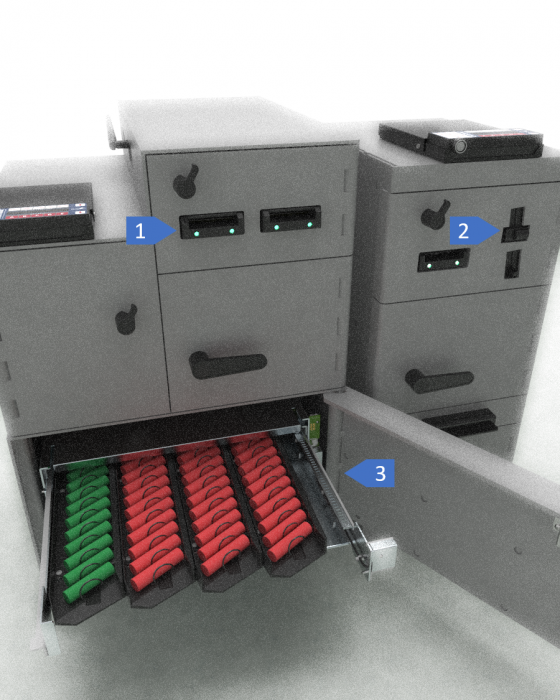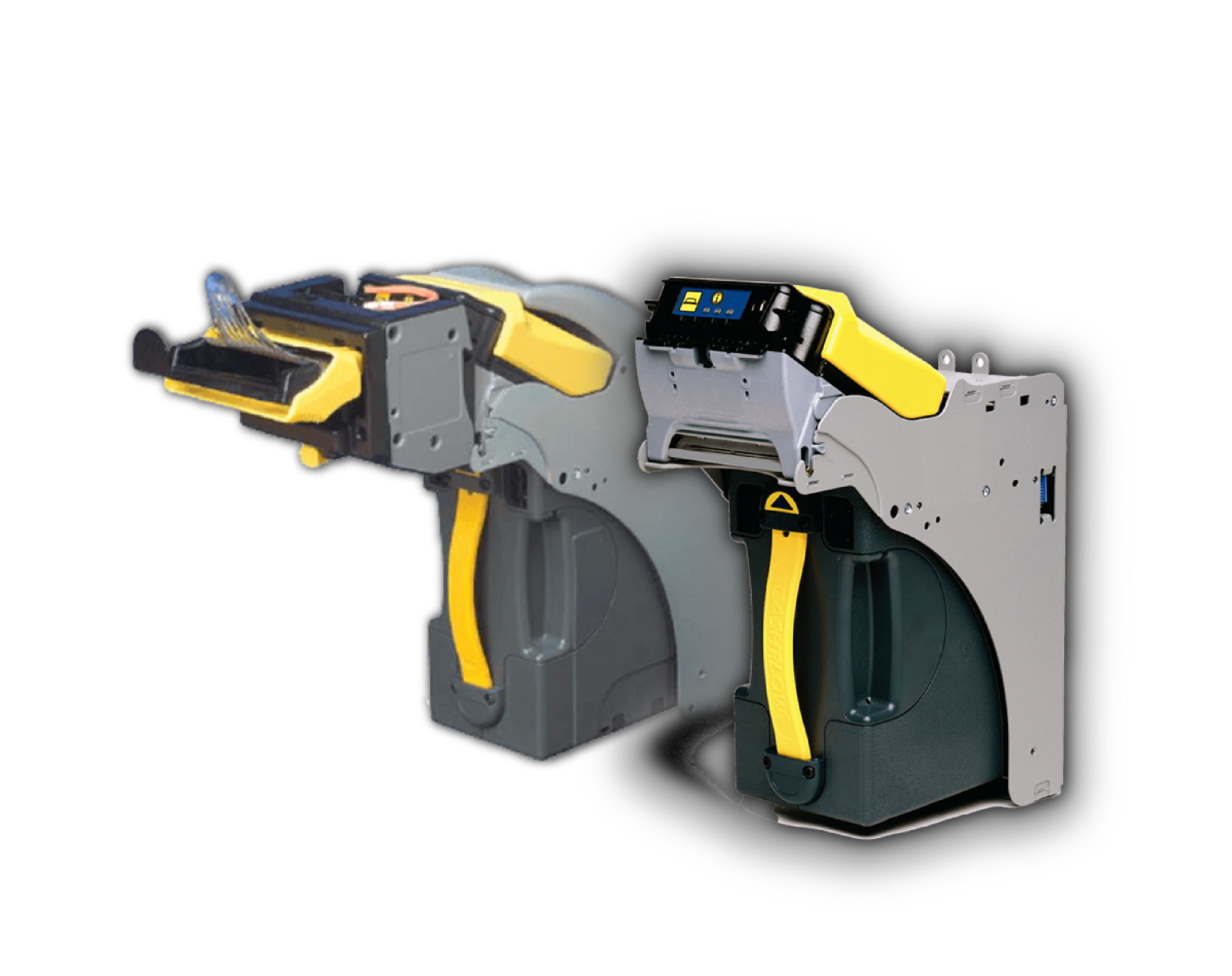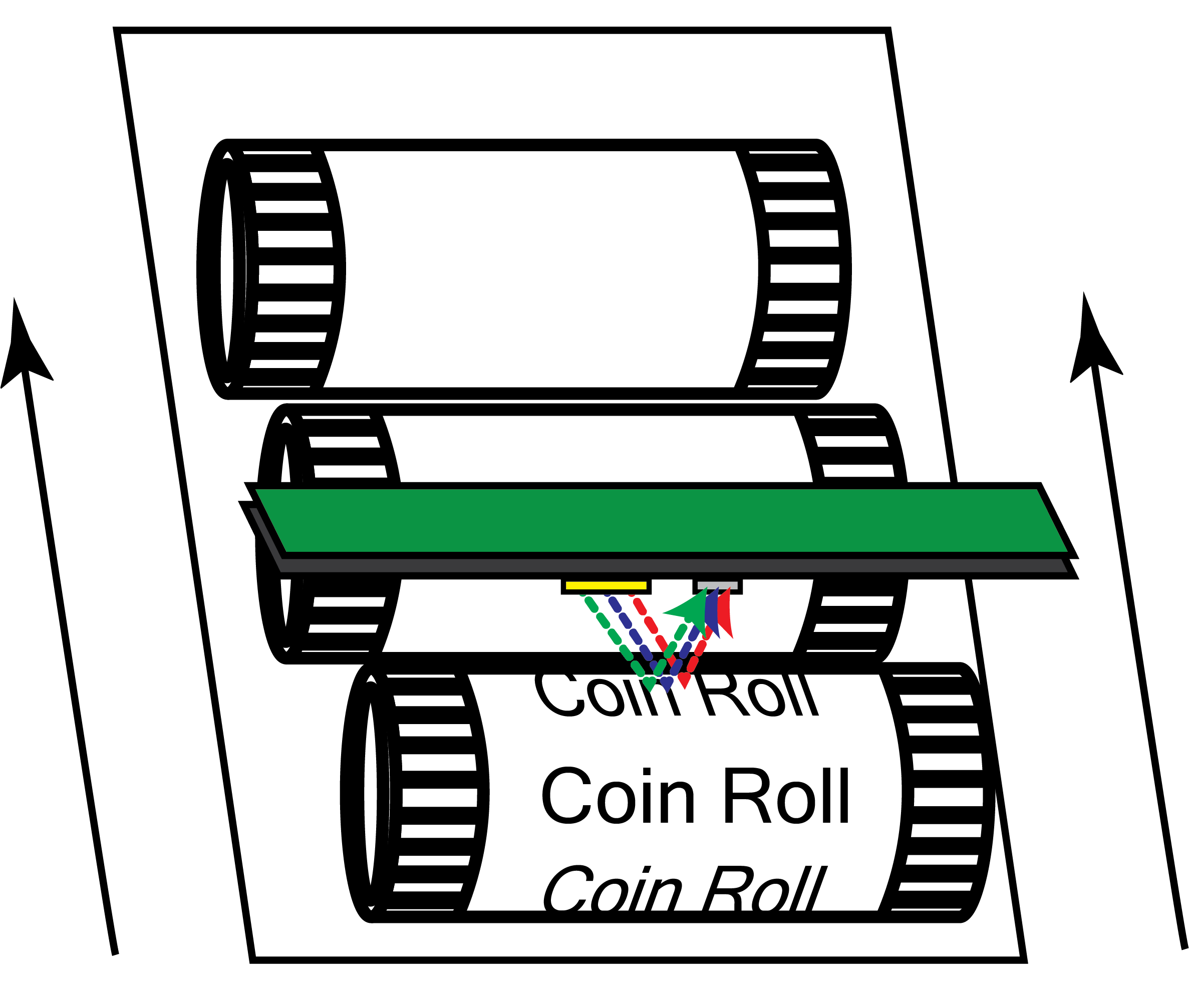Note and Coin Validation
Smart Safes are trusted to identify and accept currency only if it recognizes it to be legitimate with a very high level of certainty. Money accepted is often translated into provisional credit deposited into a retailer’s bank account daily.
Validators selected for smart safes must be robust to survive tens if not hundreds of thousands of bills and coins of varying degree of wear, minimize jams, and be simple to service.
In the diagram below, click the numbered labels to explore the technologies we use to validate currency.
Validation Technologies
1) Banknote
2) Single Coin
3) Rolled Coin and Tube

Banknote Validator

(1) Banknote validators use multiple wavelengths of light to scan the bills to determine their legitimacy and values. These validators can optionally be outfitted with an automatic feeding system (BNF) that can accept bundles of 30 notes at a time.
Coin Acceptor
(2) Coin acceptors use inductive sensors to analyze the metal content and coin size to determine legitimacy and value of coins.
Rolled Coin and Tube

(3) Our rolled coin validation system uses optical sensors to scan the contents of each coin tray eliminating the need to count rolls. These sensors can also determine if the proper rolls are loaded in the proper tracks within each tray.
Banknote Validators accurately verify the legitimacy of currency and their value far better than any manual counterfeit checking technologies. They scan the bills with an array of detectors that analyze how multiple colors of light interact with expected features.
Validators are the “engine” of the smart safe. They receive hundreds of thousands of bills over their lifetime of various levels of wear and cleanliness.
We design our equipment with only the top quality validators selected for both their note validation performance and their ability to survive for several years with minimal servicing. Ellenby is certified to service all validators we use in our products.

Coins are an important part of the cash management solution in many types of businesses. This is especially true in parts of the world where coin denominations are high and their usage in transactions are common. Some examples include:
- Canada with Loonies and Toonies
- The European Union with their 1 and 2 Euro coins
- The United Kingdom with 1 and 2 Pound Coins
Coins of value can be verified for authenticity with a coin validator which uses inductive fields to measure the types and amount of metal used within the coin body.

Ellenby’s patented rolled coin dispensing system automatically counts rolled placed inside the dispenser and validates the proper roll is in the proper location by analyzing the intensity of light bounced off the roll wrapper at multiple wavelengths.
A validating dispenser ensures accurate loading and vending of rolled coin.
